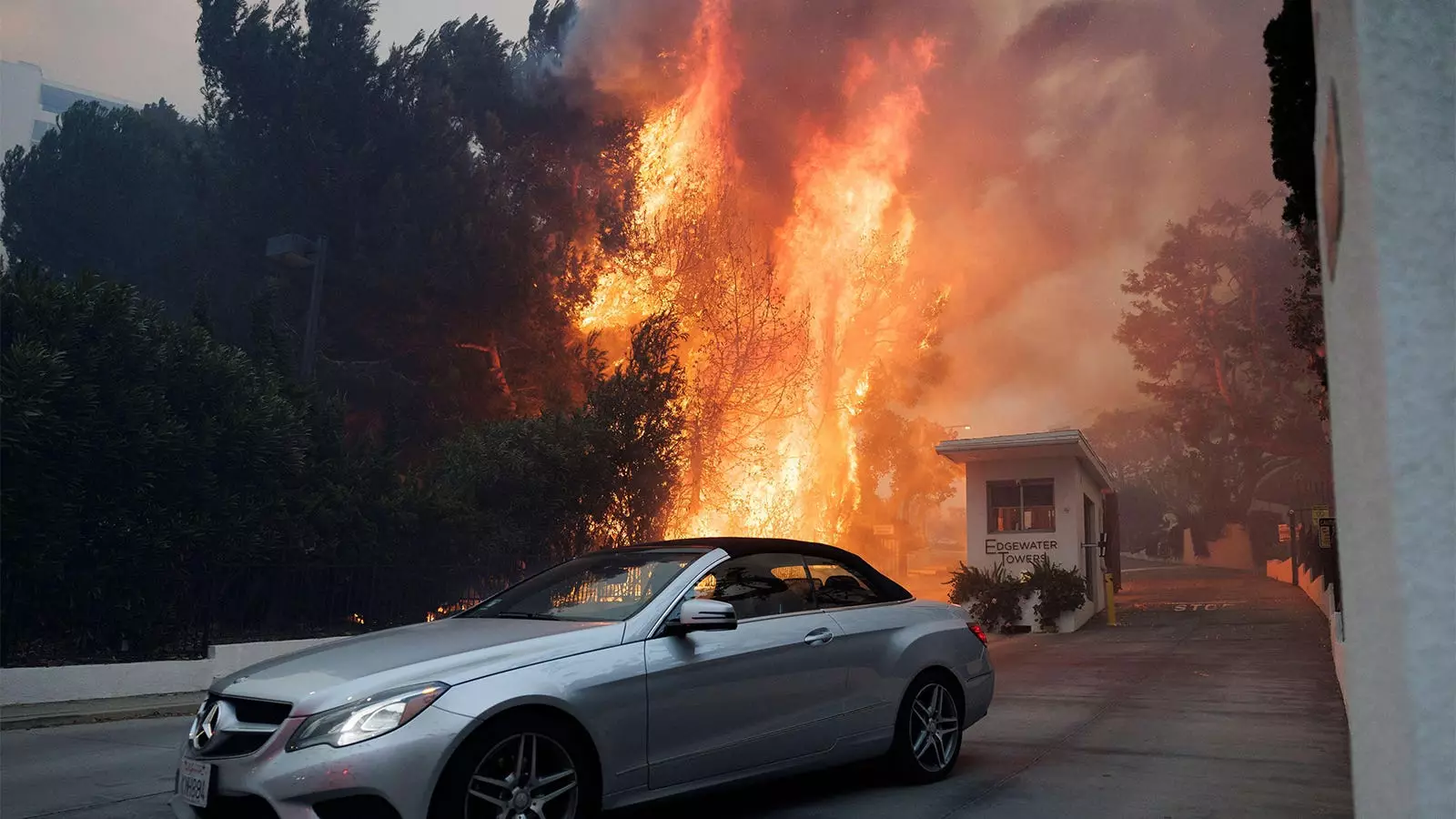Driving through Southern California this past weekend provided a haunting glimpse into an ongoing crisis as wildfires ravage the landscape. The 405 freeway, normally bustling with traffic, lay eerily empty—a stark contrast underscoring the seriousness of the situation. The air was thick with smoke as billowing plumes from the Palisades fire transformed the night sky into a canvas of chaotic forms, reminiscent of a surreal painting that highlighted humanity’s fragility against nature’s fury.
As I navigated through the Sepulveda Pass, my vehicle was enveloped by a haze of ash, creating an unsettling atmosphere that felt almost apocalyptic. The low thrum of helicopters overhead served as a grim reminder that this environmental disaster is deeply entrenched in our urban reality. Crossing into the San Fernando Valley on the 101 Freeway revealed a vision that looked both beautiful and terrifying: the distant hills were glowing an unnatural red, akin to molten lava flowing from an erupting volcano. Such sights have become all too familiar as the city grapples with unprecedented wildfire crises.
What sets this wildfire apart from those of years past is its unprecedented reach into urban settings, melting the boundaries between wildland and civilization. Hundreds of thousands of individuals are impacted, with urban properties caught in the fiery chaos releasing a cocktail of toxic chemicals into our atmosphere. Compounds such as PM2.5 particulates, along with harmful byproducts from plastics and building materials, pose immediate health risks to both first responders and ordinary citizens alike.
With the scale of damage, the risk of inhalation injuries has surged. Many community members, already struggling with the stress of evacuation and loss, are now showing up at hospitals in alarming numbers. The long-term ramifications of this chemical release could resonate for years, potentially leading to chronic illnesses similar to those seen in populations affected by other major environmental catastrophes.
While physical health impacts are of paramount concern, we must also turn our attention to the significant psychological toll these wildfires impose. The loss of homes and displacement leaves both young and old traumatized, grappling with anxiety, depression, and post-traumatic stress. Mental health crises often lag behind physical health emergencies, but they can be just as devastating, affecting an entire community’s well-being.
In these chaotic times, the need for a comprehensive understanding of how environmental factors influence health has never been more crucial. As a physician in conflict zones of occupational and environmental health, I recognize the urgent need to mobilize diverse stakeholders to address these challenges.
The urgency of the wildfire crisis has illuminated the critical role that occupational and environmental medicine plays in disaster scenarios. We possess the expertise necessary to tackle the intricate web of risks associated with natural disasters. By leveraging our understanding of environmental hazards, we can unify efforts between healthcare providers, public health officials, and community leaders to effectively manage these challenging situations.
Historically, in the aftermath of events like the 9/11 attacks, healthcare professionals created programs to monitor and support those on the front lines. Similarly, throughout the COVID-19 pandemic, we developed operational guidelines to ensure worker safety. Our field is adept at deploying medical surveillance strategies that could be invaluable during ongoing environmental emergencies.
Looking ahead, we must not only respond to existing wildfires but also develop proactive systems for monitoring air quality, pollutants, and health resources. By consolidating this data into accessible platforms, we equip citizens with the information needed to navigate dangerous conditions effectively.
However, to effectively address these pressing needs, a robust workforce of occupational and environmental medicine specialists is essential. With only a handful of accredited residency programs remaining in the U.S., the shortage of trained professionals threatens our ability to respond adequately to environmental emergencies.
It is crucial to advocate for more investment in training programs to ensure we cultivate a new generation of physicians adept at tackling these multifaceted challenges. Our collective future resilience hinges on our ability to foster interdisciplinary collaborations that leverage innovations in technology and medical care.
As Los Angeles faces this ecological crisis, the challenge extends beyond local concerns; it resonates on a global scale. By pooling our resources, knowledge, and ingenuity, we can lead the way in developing sustainable solutions that bridge health and environmental dynamics.
In a time colored by smoke and uncertainty, our vision for a healthier, more resilient future must remain resolute. Los Angeles can emerge as a beacon of hope and innovation in the fight against climate change—demonstrating that human creativity, in conjunction with robust medical practices, can lead us toward a horizon where we not only survive environmental adversity but thrive within it.


Leave a Reply